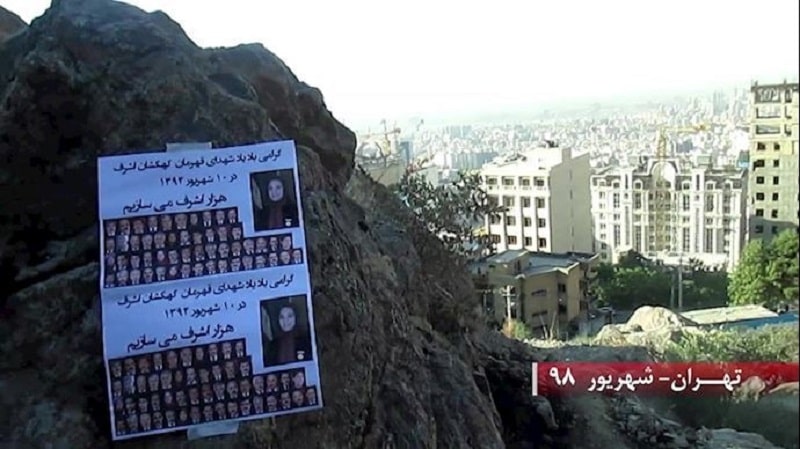Iranian resistance units commemorate victims of Ashraf massacre
By: Staff
The members of a resistance unit, installed large posters the Ashraf massacre victims on in the mountains of Tehran. On September 1, 2013, at the behest of the Iranian regime, the forces of Iraqi Prime Minster Nouri al-Maliki, attacked Camp Ashraf, where some 100 MEK members had remained to oversee the sale of the residents’ property. During the attack, the assailants murdered 52 MEK members in cold blood while they were unarmed and defenseless.
This crime against humanity drew wide condemnations across the world. The MEK martyrs, which stood true to their principles and their goal for a free Iran till their last breath, became a source of inspiration for the youth and freedom fighters in Iran.
These high-risk activities of the resistance units are carried out under conditions circumstances where that the mullahs’ regime has put its suppressive forces on the highest alert, alongside creating a state of fear and suppression, conducting arrests, imprisonments, and shootings in an attempt to prevent any protest and strike, especially any activities related to the MEK and Mrs. Maryam Rajavi.
In the past months, Iranian resistance units have played a key role in undermining the Iranian regime’s efforts to spread terror and fear and to prevent more social and political protests from taking shape. Resistance units have been actively setting fire on banners and posters of regime icons and leaders, sending a message of hope and unity to the millions of Iranians who are fed up with the 40-year tyranny of the mullahs.
What you should know about Ashraf massacre
September. 1, 2013, Ashraf massacre: Right after the dawn the Iraqi mercenaries of MOIS along with a former defector of the MEK/PMOI as their guide attacked the small remaining group of MEK in Camp Ashraf. 52 of them were murdered, actually executed, with their hands tied at their backs. They abducted seven others (six women and one man) and took them to an unidentified location. Attackers also used explosives to destroy residents’ properties and buildings. The carnage came after a series of attacks at this camp, since Maliki had become Iraq’s prime minister.
Report on Ashraf massacre, September 1st (PDF)
